Wool fabric, derived from the fleece of sheep and other animals like goats and alpacas, what does wool fabric look like is an interesting topic, it is a natural textile known for its warmth, durability, and luxurious feel. Its versatility makes it a staple in fashion, home textiles, and various industrial applications.
What is Wool Fabric?
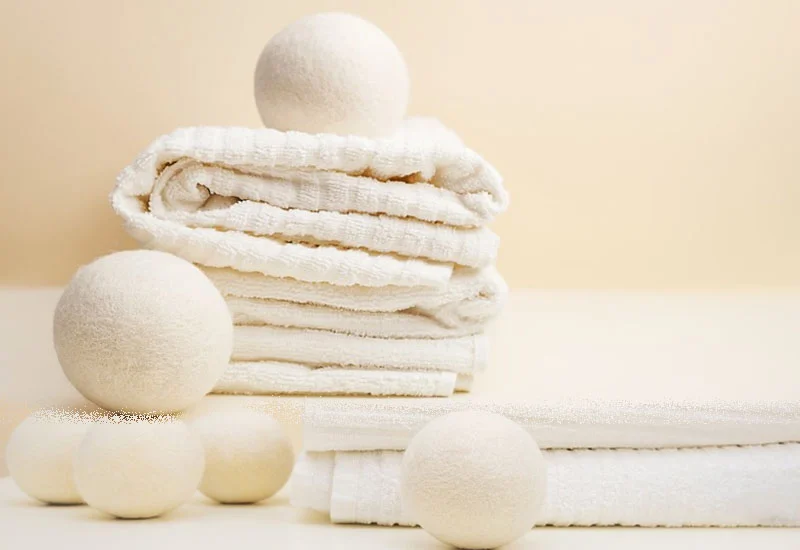
Wool fabric is a natural textile fiber obtained from the fleece of sheep and certain other animals, including goats (cashmere and mohair), and even camels and llamas. It is known for its excellent insulating properties, moisture-wicking ability, and resilience.
What Does Wool Fabric Look Like? Tips for Identification
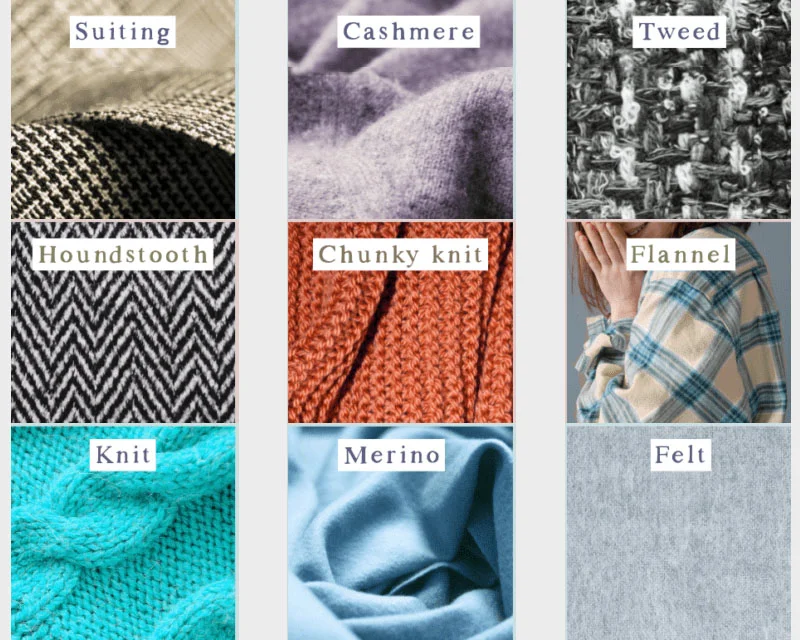
Physical Properties
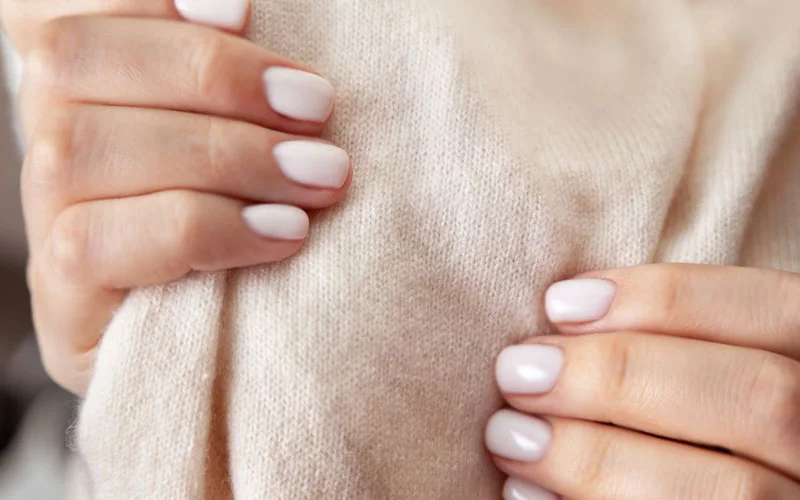
Texture and Feel
Wool fabric can vary widely in texture, ranging from incredibly soft and smooth to coarse and rugged. This variation is due to the type of wool and its processing.
Merino Wool:
Known for its fine and silky texture, it is ideal for high-quality garments worn next to the skin.
Shetland Wool:
Coarser and more robust, suitable for outerwear and durable textiles.
Products:
Sweaters, scarves, suits, coats, blankets.
Durability
Wool is notable for its durability, which comes from the natural elasticity of wool fibers. These fibers can stretch and return to their original shape without breaking, contributing to the longevity of wool garments.
Products:
Workwear, military uniforms, outerwear, home textiles.
Weight and Thickness
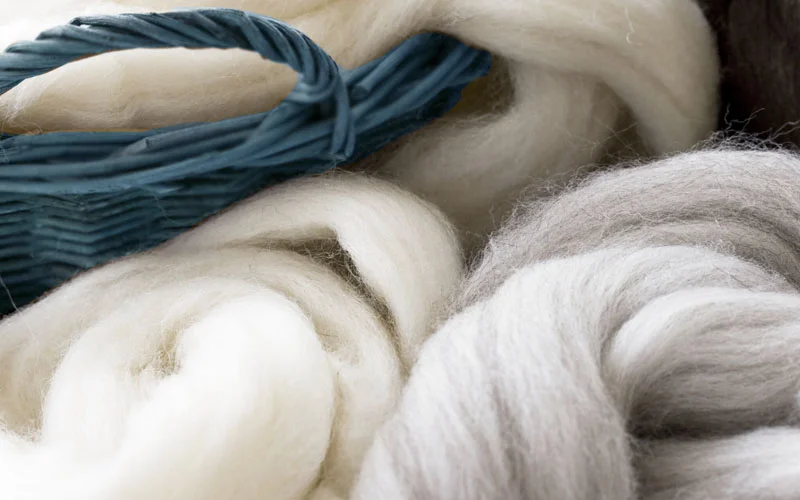
| Wool Fabric Weight (GSM) | Characteristics | Uses | Advantages |
|---|---|---|---|
| Lightweight (150-200 GSM) | Thin, breathable, soft | Summer garments: suits, dresses, blouses | Comfort in warm weather, luxurious drape |
| Medium-weight (200-300 GSM) | Balanced warmth, moderate thickness | All-season wear: trousers, skirts, jackets | Versatility, comfort, suitable for various climates |
| Heavyweight (300-400+ GSM) | Thick, dense, warm | Winter garments: coats, jackets, blankets | Excellent insulation, durability, warmth |
Wool fabrics are available in a range of weights and thicknesses, making them suitable for different uses.
Lightweight Wool:
Thin and drapes well, perfect for suiting and summer attire.
Heavyweight Wool:
Thick and insulating, ideal for coats and blankets.
Products:
Suits, trousers, coats, blankets.
Breathability and Insulation
Wool’s breathability and insulation are among its most celebrated features. The crimp in wool fibers creates air pockets that trap heat, providing excellent insulation, while the fabric’s ability to absorb and release moisture helps regulate body temperature.
Products:
Activewear, outdoor clothing, base layers.
Absorbency
Wool can absorb a significant amount of moisture without feeling wet, enhancing its comfort, especially in activewear and garments designed for variable weather conditions.
Products: Socks, sportswear, undergarments.
Chemical Properties
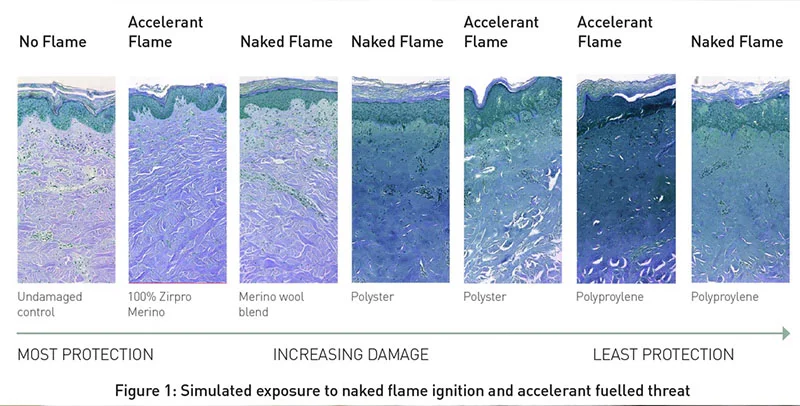
Composition
Wool is primarily composed of keratin, a fibrous protein also found in human hair and nails. This protein structure imparts unique properties to wool, such as its elasticity, strength, and heat retention.
Products:
High-performance apparel, thermal wear.
Flame Resistance
Wool is known to have the highest natural fire resistance; the temperature of the natural flame must reach a high of 570-600 °C before the wool will ignite. Compared to other untreated textiles such as cotton which is flammable at just 255 °C.
Wool’s natural flame resistance is a notable chemical property. Wool fibers are difficult to ignite, and when they do burn, they tend to self-extinguish, making wool a safer option for clothing and home textiles.
Products:
Firefighter uniforms, blankets, upholstery.
Biodegradability
As a natural fiber, wool is biodegradable, breaking down naturally over time without releasing harmful chemicals into the environment. This makes it an eco-friendly choice.
Products:
Sustainable fashion items, and eco-friendly textiles.
Sensory Experience
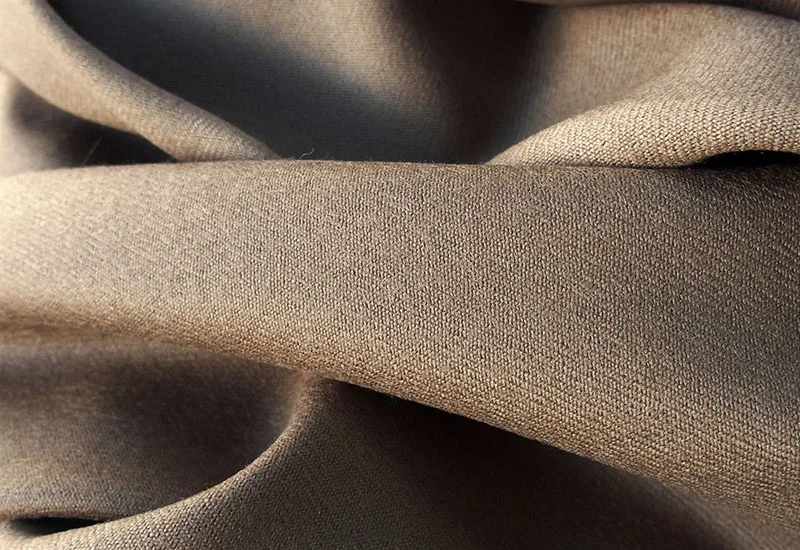
Touch and Skin Feel
The tactile sensation of wool can vary significantly:
High-quality wools:
Such as Merino and cashmere, are incredibly soft and gentle against the skin, suitable for sensitive skin types.
Coarser Wools:
Though still comfortable, may feel slightly rougher and are often used in outer layers or durable items.
Products:
Sweaters, scarves, gloves, hats.
Vision
Visually, wool fabric often has a distinctive matte finish but can range to a slight sheen, depending on the wool type and processing. Wool fabrics can be dyed in a wide range of colors, from vibrant hues to subtle, earthy tones.
Products:
Fashion garments, home décor items, accessories.
Detection Methods

Physical Tests
Touch Test:
Wool often feels warm and slightly textured compared to synthetic fibers, which can feel colder and smoother.
Products:
Used to verify authenticity in wool garments and textiles.
Burn Test
Method:
Wool, when burned, smells like burning hair, curls away from the flame, and leaves a brittle, black ash.
Products:
Used in quality control and testing in textile manufacturing.
Microscopic Examination
Method:
Under a microscope, wool fibers show a distinctive scaly surface, not present in synthetic fibers.
Products:
Laboratory testing, fiber analysis in textiles.
Taste
Although not a standard method for identifying textiles, some traditional wool artisans might use taste as a unique way to verify wool authenticity. Wool fibers may have a slightly distinct, non-synthetic taste.
Products:
Artisanal and traditional wool processing.
| Type of Wool Fabric | Length | Weight | Color | Feel | Use | Breathability | Durability |
| Merino Wool | Short | Light to Medium | Varied (often natural tones) | Soft and Fine | Base layers, activewear, lightweight garments | High | High |
| Cashmere | Short | Light | Varied (often neutral) | Luxuriously Soft | Sweaters, scarves, high-end clothing | Moderate | Moderate |
| Lambswool | Medium | Medium | Varied (often natural tones) | Soft, but with some texture | Sweaters, blankets, outerwear | Moderate | High |
| Alpaca Wool | Medium to Long | Medium to Heavy | Varied (often natural tones) | Very Soft and Silky | Coats, scarves, blankets | High | High |
| Angora Wool | Short | Light | Varied (often light pastels) | Extremely Soft and Fluffy | Sweaters, accessories | Moderate | Low |
| Shetland Wool | Short | Light to Medium | Varied (often heathered) | Coarse and Textured | Sweaters, outerwear | Moderate | High |
| Tweed | Medium to Long | Medium to Heavy | Varied (often heathered with flecks) | Textured and Rugged | Jackets, suits, skirts | Moderate | High |
Wool Fabric Tips
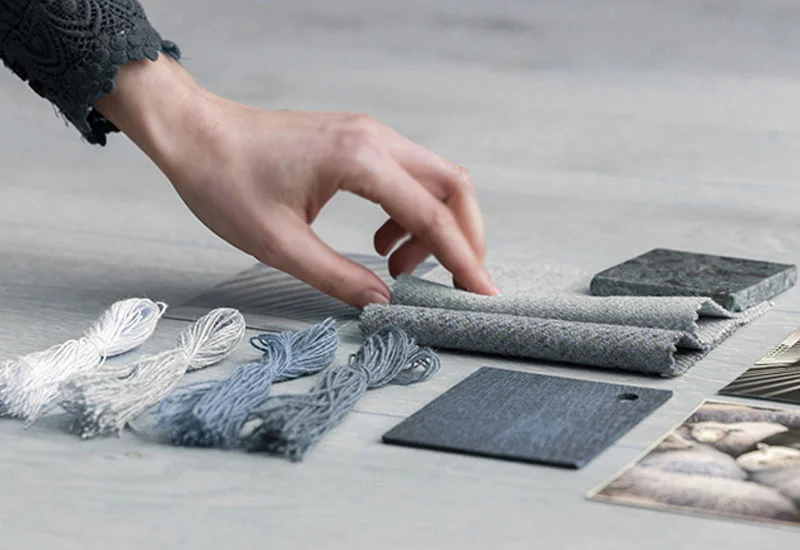
What Does Wool Fabric Look Like? It’s now clear. Let’s learn about the precautions of Wool Fabric.
1. Understand Your Wool
Different types of wool have unique characteristics that can affect how they should be handled and cared for. Before starting any project, take the time to familiarize yourself with the specific type of wool you’re working with, whether it’s merino, worsted, or woolen.
2. Pre-Treat for Shrinkage
Wool has a tendency to shrink when exposed to heat and agitation. To prevent unwanted surprises later on, pre-treat your wool fabric by washing and drying a swatch to gauge its shrinkage potential before cutting into your main fabric.
3. Use Sharp Tools
Wool fabric can be dense and thick, so it’s essential to use sharp scissors or rotary cutters when cutting out your pattern pieces. Dull blades can result in jagged edges and uneven cuts, compromising the quality of your project.
4. Secure Seams
To prevent unraveling, finish your seams with techniques such as serging, overlocking, or using a zigzag stitch on your sewing machine. This will ensure that your seams stay intact and your garment or project maintains its durability over time.
5. Press with Caution
When pressing wool fabric, use a low to medium heat setting on your iron and always test on a scrap piece of fabric first. Avoid using steam as it can cause the wool to shrink and distort. Additionally, use a pressing cloth to protect the fabric from direct heat.
6. Hand Wash or Dry Clean
Wool fabric is best cared for with gentle methods. Hand washing in cold water with a mild detergent is often recommended to preserve its integrity. If machine washing is necessary, use a delicate cycle with cold water and a wool-specific detergent.
7. Air Dry Flat
Avoid using the dryer for wool fabric, as heat can cause shrinkage and felting. Instead, reshape your garment or project and lay it flat to dry on a clean towel away from direct sunlight and heat sources.
8. Store Properly
To prevent moths and other pests from damaging your wool fabric, store it in airtight containers or garment bags with mothballs or cedar blocks. Additionally, avoid hanging heavy wool garments, as this can cause stretching and distortion over time.
9. Embrace the Nap
Wool fabric often has a visible nap or direction of fibers. When cutting out pattern pieces, be mindful of the nap and ensure all pieces are cut in the same direction for consistency in appearance.
10. Invest in Quality
Quality wool fabric will not only look better but will also be easier to work with and will last longer in your finished projects. When purchasing wool fabric, invest in high-quality materials from reputable suppliers to ensure the best results.
FAQs
What does wool fabric look like in terms of texture?
The wool fabric typically has a slightly fuzzy surface due to the presence of tiny scales on the wool fibers. This gives it a soft and somewhat fluffy texture, though it can vary from very soft (like Merino wool) to more coarse and rugged (like traditional woolen fabrics).
What does wool fabric look like when it is dyed?
Wool fabric, when dyed, can achieve vibrant and long-lasting colors. The natural absorption properties of wool allow it to take on rich hues, making it suitable for a wide range of colored garments and textiles.
What does wool fabric look like when it is woven into different patterns?
Wool fabric can be woven into various patterns such as plain, twill, herringbone, and more. Each pattern gives the fabric a distinct look and texture, ranging from smooth and sleek to textured and detailed.
What does wool fabric look like when used in fashion?
In fashion, wool fabric is often seen in suits, coats, sweaters, scarves, and hats. It looks elegant and polished when tailored into suits and coats, and cozy and inviting when used for knitwear like sweaters and scarves.
What does wool fabric look like compared to synthetic fabrics?
Compared to synthetic fabrics, wool fabric has a more natural and luxurious appearance. It often appears warmer and more textured, whereas synthetic fabrics can look shinier and less breathable.
What does wool fabric look like under a microscope?
Under a microscope, wool fabric reveals its unique structure of overlapping scales on each fiber. This microscopic view shows why wool has a slightly rough texture and excellent insulating properties.
What does wool fabric look like after it has been felted?
Felted wool fabric has a dense, matted appearance with a smooth surface. Felting reduces the visible texture and makes the fabric more uniform and solid, often used for hats, bags, and crafts.
What does wool fabric look like in home decor?
In home decor, wool fabric can be seen in items like rugs, blankets, and upholstery. It looks rich and warm, adding a touch of luxury and comfort to interiors.
Conclusion
In conclusion, wool fabric is warm, durable, and has a natural crimp. What does wool fabric look like? It appears fuzzy, with varying textures and colors. This versatility makes wool suitable for various clothing and textile applications. Wool’s appearance reflects its natural origin and unique properties. What does the wool fabric look like? It embodies coziness and elegance, making it a popular choice in fashion and interior design. Overall, wool fabric boasts a distinctive look that stands out among other materials.
